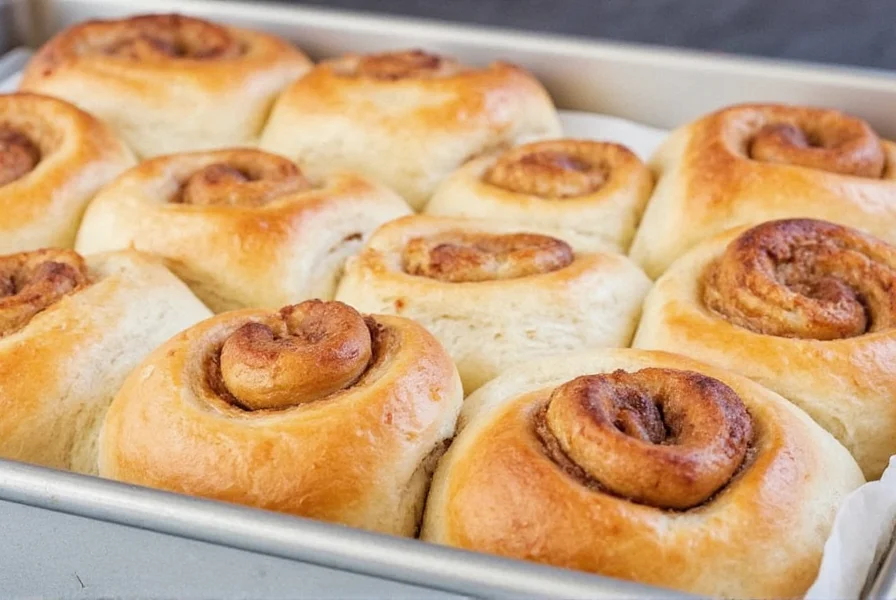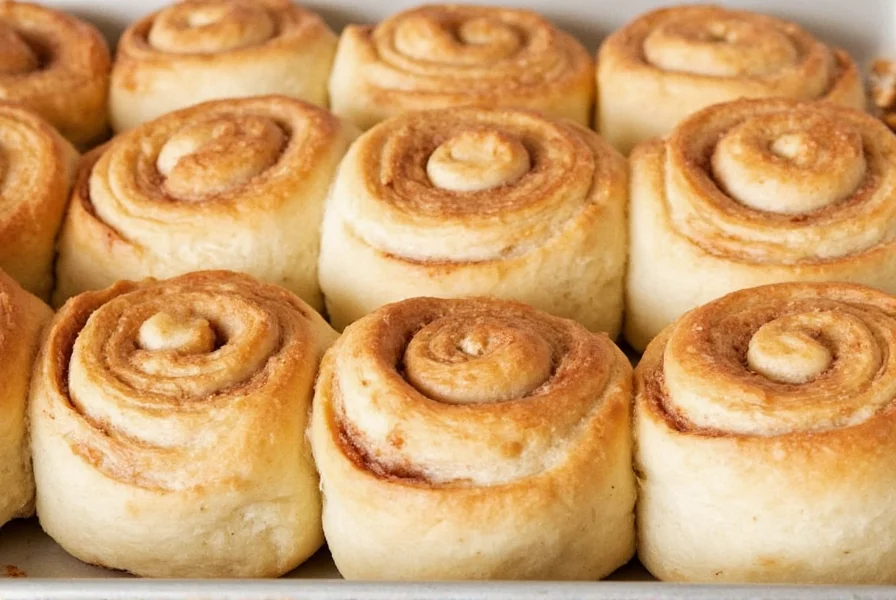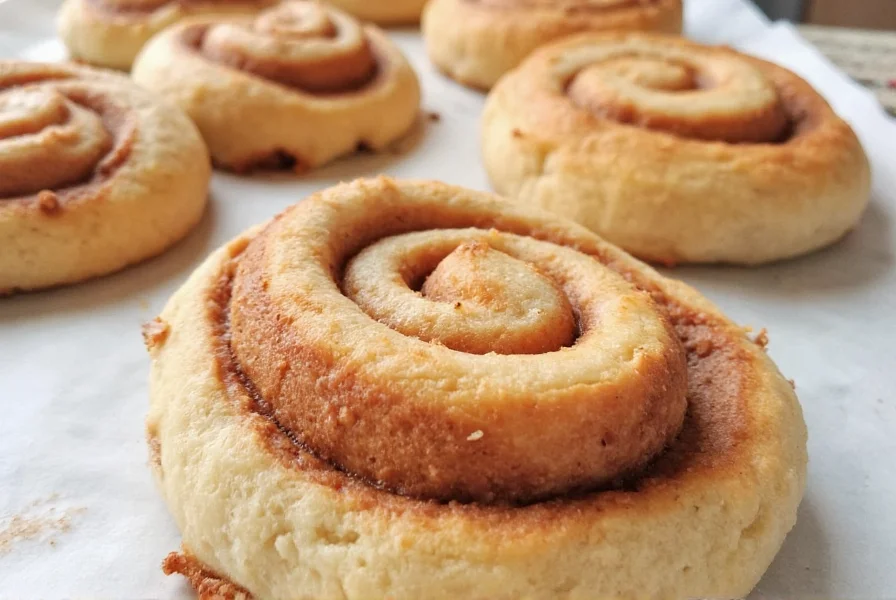There's nothing quite like the aroma of freshly baked cinnamon yeast rolls filling your kitchen. These sweet, spiral-shaped pastries have been a breakfast favorite for generations, but achieving that perfect balance of fluffy dough and flavorful filling requires understanding some key baking principles. Unlike store-bought versions, homemade cinnamon yeast rolls offer superior texture and flavor when made with attention to detail.
Essential Ingredients for Perfect Cinnamon Yeast Rolls
The foundation of exceptional homemade cinnamon yeast rolls starts with quality ingredients. Each component plays a specific role in creating that irresistible texture and flavor:
- Yeast - Use fresh active dry yeast or instant yeast, properly activated in warm milk (105°-115°F) with a pinch of sugar
- Flour - All-purpose flour works best; bread flour makes rolls too chewy
- Dairy - Whole milk and unsalted butter contribute richness and tender crumb
- Sugar - Granulated sugar in the dough, brown sugar in the filling for depth
- Cinnamon - Use Ceylon cinnamon for authentic flavor, not cassia
| Ingredient | Role in Recipe | Pro Tip |
|---|---|---|
| Yeast | Leavening agent for rise | Test viability by blooming in warm liquid with sugar |
| Whole Milk | Creates tender crumb | Warm to 110°F for optimal yeast activation |
| Unsalted Butter | Adds richness, controls gluten | Soften to room temperature before incorporating |
| Brown Sugar | Filling moisture and flavor | Mix with melted butter for perfect consistency |
Step-by-Step Baking Process
Creating the best homemade cinnamon yeast rolls involves several critical stages that require patience and attention:
- Dough preparation - Mix yeast with warm milk and sugar, then incorporate flour, butter, and eggs
- First rise - Allow dough to double in size in a warm, draft-free environment (60-90 minutes)
- Rolling and filling - Roll dough to 16x12 inch rectangle, spread filling evenly to edges
- Cutting - Use dental floss or unflavored thread for clean cuts without squishing
- Second rise - Let cut rolls expand in pan for 30-45 minutes before baking
- Baking - Bake at 375°F until golden brown (20-22 minutes)
Professional Baking Tips for Success
Even experienced bakers encounter challenges with yeast rolls. These professional techniques ensure consistent results:
- Maintain proper dough temperature between 75°-80°F during rising
- Don't skip the second rise - under-risen rolls won't have that signature pull-apart texture
- Use a kitchen scale for precise flour measurement (120g per cup)
- Rotate the pan halfway through baking for even browning
- Let rolls cool 10 minutes before adding icing to prevent melting
Troubleshooting Common Problems
Understanding why certain issues occur helps prevent them in future batches of your homemade cinnamon yeast rolls:
- Dense rolls - Usually caused by too much flour, inactive yeast, or insufficient rising time
- Filling leaking out - Brown sugar mixture too liquid; use melted butter not oil
- Uneven rising - Drafts in kitchen or inconsistent dough temperature
- Burnt bottoms - Pan placed too low in oven; use middle rack position
- Dry texture - Overbaking or inaccurate ingredient measurements
Storage and Reheating Instructions
Proper storage maintains the quality of your cinnamon yeast rolls:
- Store cooled rolls in airtight container at room temperature for 2-3 days
- Freeze unfrosted rolls for up to 3 months; thaw and bake as needed
- Reheat individual rolls by microwaving 10-15 seconds with a damp paper towel
- For best results, refresh in 300°F oven for 5 minutes before serving

Delicious Variations to Try
Once you've mastered the classic recipe for homemade cinnamon yeast rolls, experiment with these popular variations:
- Apple cinnamon rolls - Add finely diced apples to the filling
- Cheesecake swirl rolls - Incorporate cream cheese filling between layers
- Maple pecan rolls - Substitute maple syrup for some butter in filling
- Whole wheat version - Replace 1/3 of flour with whole wheat flour
- Gluten-free option - Use quality gluten-free flour blend with xanthan gum
Perfecting your homemade cinnamon yeast rolls recipe takes practice, but understanding the science behind each step transforms good rolls into exceptional ones. The key is balancing moisture content in the filling with proper dough hydration, ensuring adequate rising time without over-proofing, and baking at the precise temperature for optimal browning without drying. When executed correctly, these sweet pastries deliver that perfect combination of tender dough, flavorful swirls, and just the right amount of icing that makes them a beloved breakfast tradition.

Frequently Asked Questions
Can I make cinnamon yeast rolls ahead of time?
Yes, prepare the rolls through the cutting stage, then cover and refrigerate overnight. Let them come to room temperature and complete the second rise before baking. This method often improves flavor development while saving morning preparation time.
Why did my cinnamon rolls come out dense?
Dense cinnamon rolls typically result from too much flour, inactive yeast, or insufficient rising time. Measure flour by weight for accuracy, test yeast viability before use, and ensure proper rising conditions (warm, draft-free environment). The dough should double in size during each rise.
How do I prevent the filling from leaking out during baking?
To prevent filling leakage, use melted butter (not oil) mixed with brown sugar for the right consistency. Leave a small border (about 1/2 inch) clean around the edges when spreading filling, and pinch the seam closed after rolling. Cutting with dental floss instead of a knife also helps maintain integrity.
What's the ideal temperature for baking cinnamon yeast rolls?
The optimal baking temperature for homemade cinnamon yeast rolls is 375°F (190°C). This temperature allows the rolls to rise fully and develop golden brown color without drying out or burning. Baking time typically ranges from 20-22 minutes, but check for visual cues rather than relying solely on time.
Can I freeze homemade cinnamon yeast rolls?
Yes, unfrosted cinnamon yeast rolls freeze exceptionally well. After cutting, arrange on a parchment-lined baking sheet, freeze until solid, then transfer to freezer bags. Bake directly from frozen, adding 5-7 minutes to the baking time. Fully baked rolls can also be frozen; thaw at room temperature and refresh in a 300°F oven for 5 minutes.











 浙公网安备
33010002000092号
浙公网安备
33010002000092号 浙B2-20120091-4
浙B2-20120091-4